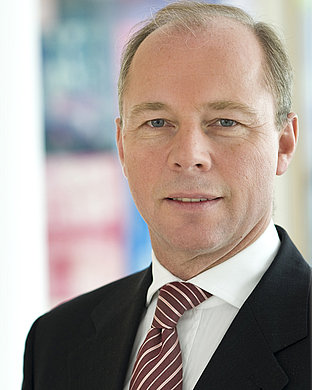After a long and steep slide, since early 2013 expectations have been showing the first signs of stabilization, also in the southern crisis countries. In the second quarter of 2013 eurozone GDP looks set to record the first increase for seven quarters. On the positive side, far-reaching adjustments have taken place and a number of imbalances have already been eliminated. The impressive rebound on the financial markets since Mario Draghi’s historic speech in July 2012 is also encouraging. Moreover, interest rates in the problem countries are on the low side, not to mention the ultra-low level prevailing in Germany.
In 2013 as a whole the eurozone economy will probably shrink by 0.3 percent on average. “But our GDP growth forecast of 1.5 percent for 2014 underscores the upwards trend”, stressed Michael Heise, Chief Economist at Allianz.
The ECB has pledged to continue to supply unlimited liquidity until mid-2014. Given what is likely to be a slow economic recovery in the eurozone and the only gradual closing of the capacity utilization gap, together with an inflation rate that is likely to remain well below the ECB’s price stability target, the key interest rate is likely to remain at the current level of 0.5 percent for at least as long. Heise: “Given the monetary policy stance, the recent rise in yields will not continue indefinitely. An over-reaction by the markets would pose a risk to both the economy and the restoration of public finances.”
In his new book “Emerging from the Euro Debt Crisis – Making the Single Currency Work” Michael Heise examines possible ways out of the crisis and how to make the single currency work. In the debt crisis the strategy was correct to use ECB and rescue fund means to buy time while at the same time tackling structural and pro-growth reforms and pushing ahead with consolidation measures. Although much still needs to be done, the steps taken so far are already having an impact. “Criticism of the crisis management over the past few years is often overdone. The government debt dilemma caught both policymakers and the markets unprepared – given the lack of experience with a crisis on this scale, a trial-and-error approach was probably inevitable,” according to Heise.
Despite the marked thaw on the euro financial markets in recent months and the progress in eliminating imbalances in the individual countries, Europe still faces major challenges. In order to ensure the long-term success of the euro it is now essential to institutionally anchor the fiscal and macroeconomic framework. However, such a significant integration requires that the people in Europe regain more confidence in the democratic decision-making processes and institutions at the European level. A reform of Europe’s political architecture is needed. This should be determined in a public debate.
In many areas the agreements reached to date are not sufficient to safeguard the euro going forward. Beyond the new Stability and Growth Pact a new fiscal framework is needed, enabling intervention in national budget sovereignty if necessary. For countries which fail to meet their commitments inside the monetary union there must be clear exit rules. Overall, the powers of the EU institutions need to be strengthened. And the measures agreed at the recent summit aimed at establishing a genuine banking union do not go far enough.
There is no alternative to the path of reform and consolidation. “Austerity is a bitter medicine which a country needs to take when the circulation of capital is disrupted. Of course it is important not to prescribe an overdose – but given that targets have already been extended several times, that is certainly not the case,” said Heise. The emphasis should not be on short-term ad hoc measures but on a medium-term concept. The focus must be on the spending side and not rely solely on tax hikes. If austerity is combined with a pro-growth reform policy, this does not act as a drag on growth but on the contrary, as many examples show, boosts competitiveness and leads back onto the growth path.
